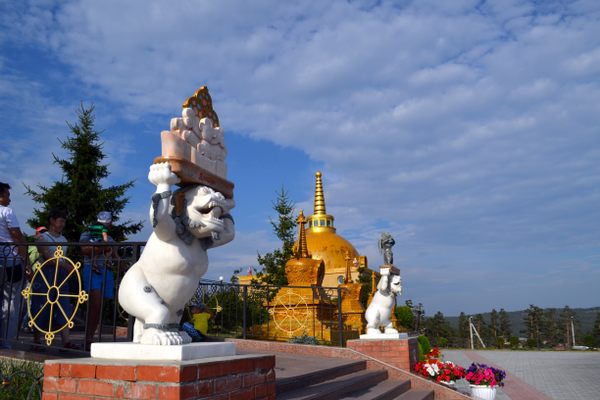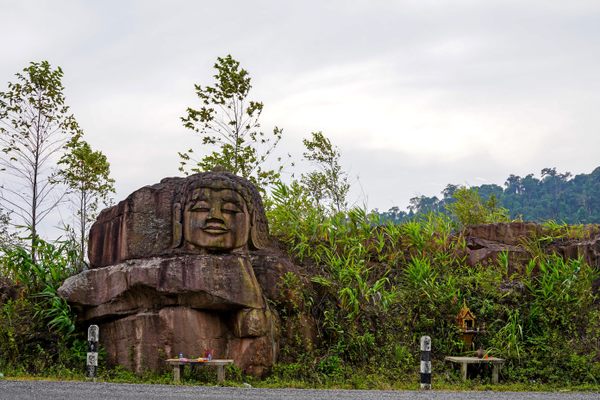About
Once upon a time, Prince Semchen Chenpo took a recreational sojourn to the forests of the Himalayan foothills with his parents and two brothers. After finding a place to rest and set up camp, the three brothers went exploring and discovered an ailing tigress lying in a nearby cave. Endowed with extraordinary compassion, Semchen stopped his brothers from killing the tigress who had just given birth to two cubs resting next to her. Upon further examination, he realized the tigress was starving and unable to move. While his brothers begrudgingly left the tigress alone and returned to camp, Semchen approached the tigress, and having no thought for himself (or any alternative solutions), he cut himself and allowed the tigress to lick his blood. Once revived, the tigress killed and devoured him.
Fortunately, Semchen was reborn as Nyingtob Chenpo (Great Courage) in the heavenly realm of Tushita and was able to visit his grieving family one last time to offer solace. After hearing his story of self-sacrifice, the family built a stupa on the spot where they discovered his bloodied clothes and discarded bones as a tribute. Today, that stupa is considered the third most important in Nepal (after Swyambhu and Boudhanath in Kathmandu) and is a significant destination for pilgrims.
Namo Buddha means “I take refuge in the Buddha” and was so named because it is believed that Semchen Chenpo was an incarnation of the Buddha owing to his extraordinary compassion. Near the stupa is the Thrangu Tashi Yangtse Monastery where upwards of 250 monk-scholars practice the Kyagu tradition of Buddhism. Also nearby are two caves, both venerated as the cave of the tigress, and on the 15th day of the fourth Tibetan month, ceremonies are held in the village to commemorate the tiger’s tale.
Related Tags
Know Before You Go
The stupa is easily reachable by road, although there are many exceptional hiking trails up to the site. Visitors to Namo Buddha will be pleased to find numerous hotels and guest houses scattered among the hills with breathtaking views of the Himalayas. The monastery is open to the public, but it is best to call ahead to confirm visiting hours.
Published
November 20, 2024








































